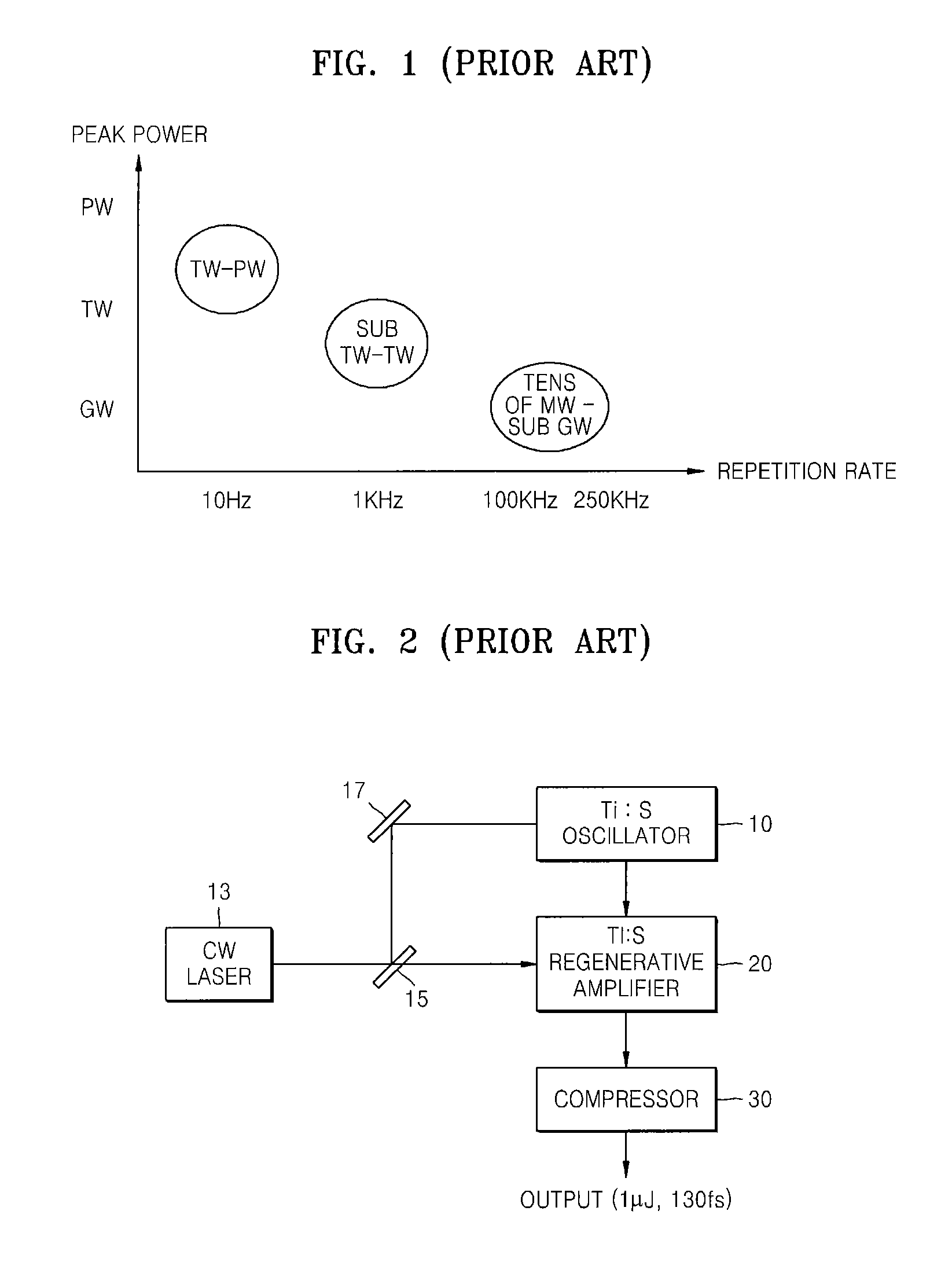High-repetition-rate femtosecond regenerative amplification system
a regenerative amplification and high repetition rate technology, applied in wave amplification devices, electrical equipment, laser details, etc., can solve the problems of 100 khz lasers with very low output power, unable to solve the problem of amplification, and commercial lasers with 100 khz repetition rate have not been used so often
- Summary
- Abstract
- Description
- Claims
- Application Information
AI Technical Summary
Benefits of technology
Problems solved by technology
Method used
Image
Examples
Embodiment Construction
[0037]The present invention will now be described more fully with reference to the accompanying drawings, in which exemplary embodiments of the invention are shown.
[0038]FIG. 5 is a plan view of a high-repetition-rate femtosecond regenerative amplification system according to an embodiment of the present invention. Referring to FIG. 5, the regenerative amplification system includes an oscillator 100 outputting laser pulses, a stretcher 200 stretching the output pulses, an amplifier 300 amplifying the stretched pulses, and a compressor 400 compressing the amplified pulses.
[0039]The oscillator 100 may be an ultra-short pulse laser, such as titanium sapphire (Ti:S) femtosecond laser, or a fiber laser that can generate femtosecond pulses in a wavelength range of 650-1100 nm of a Ti:S gain medium. The oscillator 100 outputs pulses to the stretcher 200. The stretcher 200 includes at least one prism, and a pair of diffraction gratings 217 and 220, and stretches the pulses to tens of picose...
PUM
 Login to View More
Login to View More Abstract
Description
Claims
Application Information
 Login to View More
Login to View More - R&D
- Intellectual Property
- Life Sciences
- Materials
- Tech Scout
- Unparalleled Data Quality
- Higher Quality Content
- 60% Fewer Hallucinations
Browse by: Latest US Patents, China's latest patents, Technical Efficacy Thesaurus, Application Domain, Technology Topic, Popular Technical Reports.
© 2025 PatSnap. All rights reserved.Legal|Privacy policy|Modern Slavery Act Transparency Statement|Sitemap|About US| Contact US: help@patsnap.com



